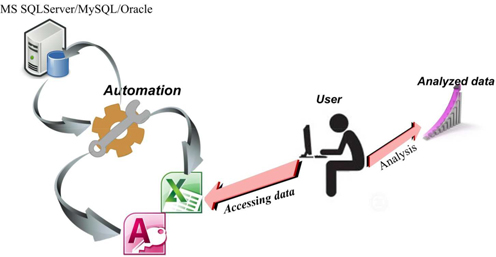Case Study
Client
The customer is a global analytical company providing ratings, research, and risk and policy advisory services. They are also the foremost provider of high-end research to the world’s largest banks and leading corporations. Their majority shareholder is Standard & Poor’s(S&P). Standard & Poor’s, a part of The McGraw-Hill Companies (NYSE:MHP), is the world’s foremost provider of credit ratings.
Executive Summary
The customer being a global rating organization had enormous amounts of data to be streamlined. These data were real time change scenarios and had complex calculations of various business entities. The customer wanted their ratings data to be automated for analysis.
Synergy Technology Services having provided a similar kind of solution to one of the largest banks in the world was pitched in to accomplish this complex solution as well.
Technology
- VBA on Excel for macros.
- Form builder and report builder macros using MS Access.
- Application development using MS DotNET framework 3.5 and 4.0.
- Database optimization on MySQL/MS SQL Server/Oracle.
Solution
The customer wanted an automated solution that would enable their data analysts to run through huge piles of data quickly and efficiently. The automated data has to be stored in database and fetched to create ratings of various organizations.
- Automated the entire process of storing the data, fetching the data and generating customized reports as per customer need.
- Deployed a team of four, two for automation and rest for report generation.
- Provided onsite services to the customer’s change requests.
- Ramped up the entire process to a faster and more agile one.
Case Study

Challenges
- Streamlining and automating huge amount of data in a short span of time.
- Creating a robust and agile mechanism to facilitate real time data processing.
Business Impacts
- Reduced manual intervention to facilitate faster output for data analysis.
- Streamlined and formatted data for better accessibility and visibility.
- Enabled the customer in faster decision making.

